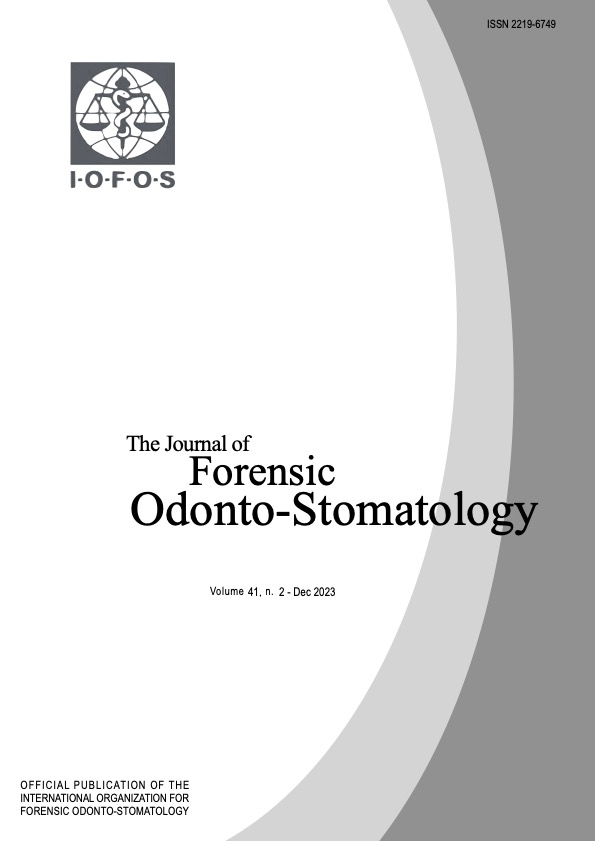Accuracy of dental age estimations based on individual teeth and staging system comparisons
Abstract
AIM:
To investigate whether a specific tooth or teeth provide the most accurate estimation of chronological age (CA), and determine which of the three staging systems studied represents dental development for an individual tooth.
METHOD:
Data were collected from 400 digital panoramic radiographs of healthy Saudi children aged 6.00–15.99 years. Each permanent tooth on the left side was evaluated to determine its developmental stage and dental age using the methods by Moorrees, Fanning, and Hunt (MFH) (1963), as adapted by Smith (1991), Gleiser and Hunt (1955), and Nicodemo et al. (1974). The accuracy (bias) of each tooth type and stage was assessed in relation to the CA, the teeth and the methods were compared, and the accuracy of age estimation using all teeth and the most accurate tooth in each method were compared.
RESULTS:
Regarding staging systems, comparatively, Gleiser and Hunt’ s method had the lowest bias for the lower first molar (-0.50 ± 1.05 years). Nicodemo et al.’s method had a lower bias for all other mandibular teeth compared to the MFH method.
For individual teeth using the MFH method, the most and least accurate teeth for the combined sexes were the lower central incisor (-0.59 ± 0.77 years) and the lower first molar (-1.54 ± 0.93 years), respectively. No significant difference was found between the biases when using the lower central incisor alone and when using all teeth for the combined sexes.
For individual teeth using Nicodemo et al.’s method, the most and least accurate teeth for combined sexes were the upper central incisor (-0.03 ± 1.01 years) and the lower first molar (-1.08 ± 1.59 years), respectively. A significant difference was found between the biases using the upper central incisor alone and all teeth for the combined sexes, with the upper central incisor exhibiting the lowest bias (-0.03 ± 1.01years) (P=0.028).
CONCLUSION:
Comparatively, Nicodemo et al.’s method had the lowest bias for all teeth except for the lower first molar, where Gleiser and Hunt's method had the lowest bias. This, however, should not be confused with precision. MFH’s staging system was more representative of dental development for an individual tooth.
For combined sexes, the lower central and lateral incisors were the most accurate teeth using the MFH method. The upper central incisor and lower first premolar were the most accurate teeth using Nicodemo et al.’s method. The lower first molar was the least accurate tooth using both methods.

